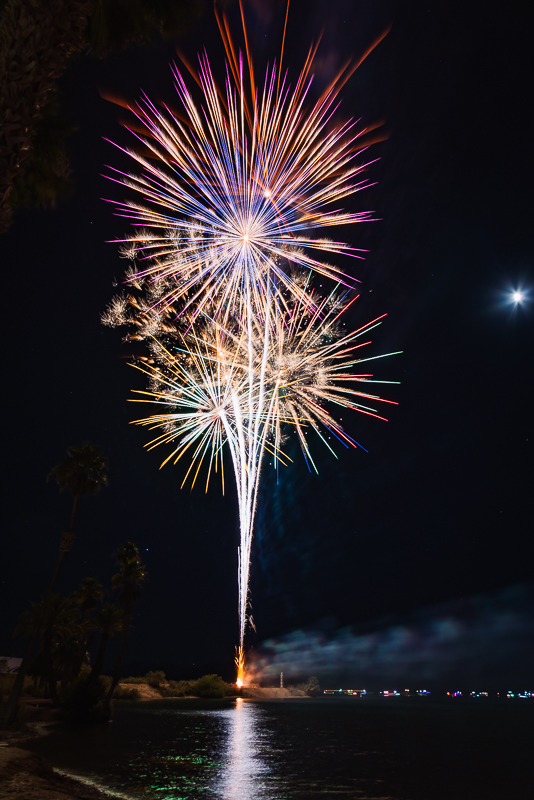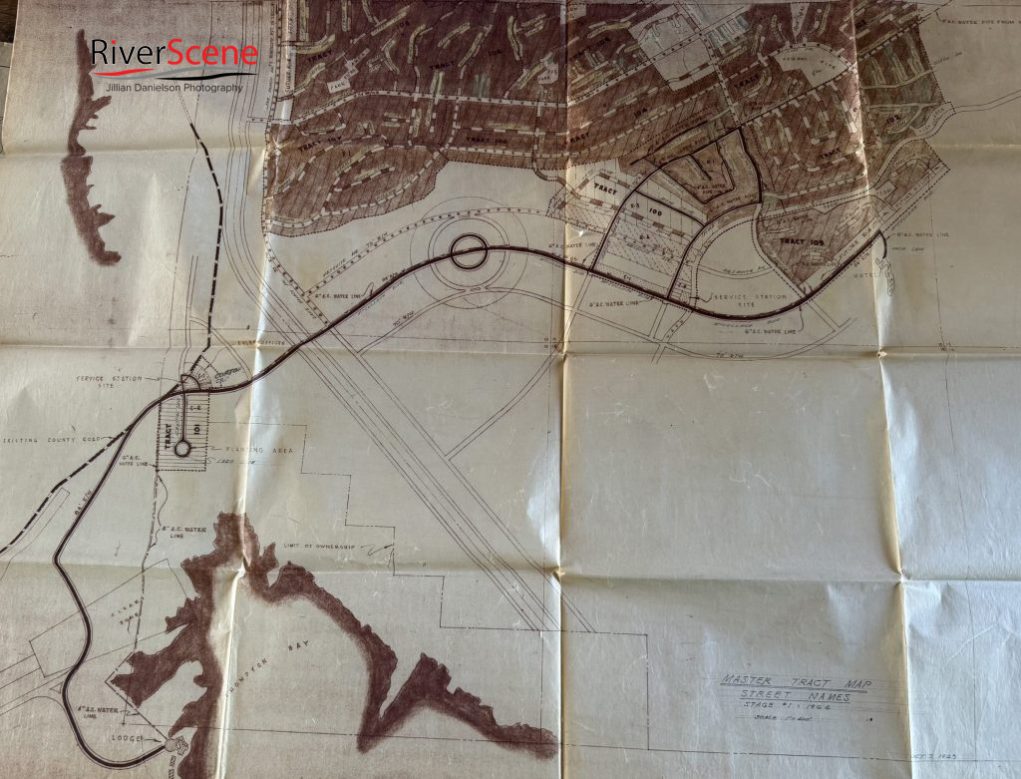While the reputation of traveling in parts of the Midwest has often been categorized as boring, in reality, it is anything but.
There are plenty of off-the-beaten path adventures to be enjoyed along the roadways.
RiverScene Magazine was recently road trippin’ and found some interesting places in Iowa and Oklahoma that add to the joy of touring the country.
Here are some of those interesting and unique places.
The Star Trek Museum and Future Birthplace of James T. Kirk
Captain’s Log: Star Date 2019: For “Star Trek” fans that want to get a closer look into the life of Capt. James T. Kirk, visit his future birthplace in Southeastern Iowa – Riverside. There is a museum located along Highway 22 and it’s pretty easy to find. It’s hard to miss the replica of The Starship Enterprise out front.
Gene Roddenberry noted in his 1968 book “The Making of Star Trek,” that James Tiberius Kirk was born in a small, but unnamed Iowa town. Since there was no city designated by Roddenberry, Riverside decided in 1985 that they were just as likely a place as any, and declared themselves the future birthplace of Captain James T. Kirk.
It was Steve Miller, a Star Trek fan and Riverside city councilman that suggested the idea but it was the entire city council that unanimously passed the motion at the very next meeting. Riverside promptly changed their official city slogan from “Where the Best Begins” to “Where the Trek Begins,” and they have never looked back. They now host the annual Trek Fest (formerly the River Fest), and since the release of the 2009 reboot have officially become part of the Star Trek cannon. Some of the Star Trek cast members can also be seen time to time at the Trek Fest.
After the city council declaration, Miller planted a flag behind the barbershop designating it Kirk’s official future birthplace. A proper engraved monument was added a few years later, and now there’s a bench for relaxing and spaceship shaped donation box to help with maintenance costs.
Admission to the museum is free, and it is loaded with “Star Trek” memorabilia, autographs, costumes and even a “Star Trek Next Generation” movie prop.
T-shirts, postcards, pins, and even dirt from where the birthplace landmark is located, is available for purchase at the museum.

A movie prop from “Star Trek Next Generations” is on display at the Star Trek Museum in Riverside, Iowa. Jillian Danielson/RiverScene

A replica of the Starship Enterprise is on display in front of the museum in Riverside, Iowa. Jillian Danielson/RiverScene

A sign marking the birthplace of Captain James T. Kirk is located behind a yellow building in Riverside, Iowa. Jillian Danielson/RiverScen

A statue of Captain James T. Kirk is located in a park across the street from the Star Trek Museum. Jillian Danielson/RiverScene
The Field of Dreams Film Location
“If you build it, they will come” was the iconic line in the 1989 hit movie “Field of Dreams” and nothing could have been more profetic!
They built the field and tourists come! Just outside of Dyersville, Iowa, the famous baseball field is located at 28995 Lansing Road.
Visitors can actually walk into the corn fields that Ray Liotta, James Earl Jones and Kevin Costner made famous. All ages are welcome to play ball on the baseball diamond or sit and watch from the bleachers. To walk around the field is free, but to tour the house that was featured in the movie, is $20 for adults and $12 for children.
A gift shop is located on site where T-shirts, key chains and postcards are available. To learn more about this iconic ball field, visit https://fieldofdreamsmoviesite.com/
“Is this Heaven? No, it’s Iowa.”

A view from the baseball field of the house that was in the movie “Field of Dreams.” Jillian Danielson/RiverScene

A view from the pitcher’s mound that was in the movie “Field of Dreams.” Jillian Danielson/RiverScene

The corn field that was transformed into “Heaven” in “Field of Dreams” is still in the outfield. Jillian Danielson/RiverScene
The Grotto of the Redemption
In 1912, Father Paul Matthias Dobberstein began to build a silent shrine to Mother Mary in West Bend, Iowa. The Grotto is based on the life of Jesus and is made of petrified wood, topaz, quartz, geodes and jasper. It also includes sculptures of angels , Mary and Jesus throughout The Grotto.
Father Dobberstein became critically ill with pneumonia as a young seminary student. As he fought for his life, he prayed to the Blessed Virgin Mary (the Mother of God) to intercede for him for the grace of health. He promised to build a shrine in her honor of he lived.
The illness passed, the student completed his studies and after his ordination he came to West Bend as Pastor in 1898. For more than a decade, he was stockpiling rocks and precious stones. The actual work of giving permanence to his promise began to take shape in 1912. The designed purpose of the Grotto is to tell in silent stone made spiritually eloquent, the story of man’s fall and his redemption by Christ, the savior of the world.
Father Dobberstein was 74 years old when Father Greving was sent to West Bend to assume Dobberstein’s clerical duties, as well as to assist with the ongoing building project. New to the rigors of grotto construction, Father Greving immediately envisioned the usefulness of an electric hoist and miraculously convinced his superior to introduce this device. Up to that time all lifting had been done by hand.
Dobberstein worked with Father Greving and Matt Szerensce on the Grotto of the Redemption for another eight years. Dobberstein died July 24, 1954.
The Grotto of the Redemption is outdoors and is free admission 24/7. The Saint Peter and Paul Catholic Church is also on the grounds as well as The Grotto gift shop and museum. To learn more about The Grotto of the Redemption, visit their website http://www.westbendgrotto.com/

A sculpture of an angel is displayed on top of a dome made of petrified wood at The Grotto in West Bend, Iowa. Jillian Danielson/RiverScene

A cross and sculpture of Jesus and Mary are displayed on top of many rocks and precious stones at The Grotto. Jillian Danielson/RiverScene
Pilot Knob Tower
Pilot Knob Tower is located on 2148 340th Street in Forrest City, Iowa. It was built in the 1930s by Civilian Conservation Corps and is the second highest point in Iowa. The views from the top of the tower are stunning.
Pilot Knob State Park is located southeast of Forest City, Iowa. Founded in 1923, it is one of the oldest state parks in Iowa. Between 1990 and 1995, one area was named nationally recognized historic district and five structures were individually listed on the National Register of Historic Places.
There are hiking trails in the area as well as places to fish and camp. For further information on Pilot Knob Tower, visit https://www.stateparks.com/pilot_knob.html
The Surf Ballroom “The Day the Music Died”
On Monday, Jan. 2, 1959, Ritchie Valens, The Big Bopper, Buddy Holly, Waylon Jennings, Dion and the Belmonts, Frankie Sardo, Tommy Allsup and Carl Bunch performed at the Surf Ballroom in Clear Lake, Iowa, during the “Winter Dance Party” tour. The Surf Ballroom is located 460 North Shore Drive in Clear Lake, Iowa.
Following the concert, Buddy Holly commissioned a plane to go to their next stop on the tour – Fargo, N.D. Valens, The Big Bopper, Buddy Holly, along with pilot, Roger Peterson, were killed when the plane crashed during a winter storm in a field outside of the Mason City Municipal Airport shortly after the concert ended.
The Surf Ballroom is now a rock ‘n’ roll museum that is free to tour. Walk through rooms that now hold rock ‘n’ roll memorabilia including signed guitars and countless autographs. It is still being used for concerts to this day. T-shirts are available for purchase in the gift shop. Visitors may also stand on the same stage upon which Buddy Holly, Ritchie Valens, and The Big Bopper performed for the last time.
While on the stage, there is a sense of traveling back in time to 1959, “The day the music died.”
For more information on the Surf Ballroom, visit https://www.surfballroom.com/index.html

The stage where Buddy Holly, Ritchie Valens, and Big Bopper played their last concert. Jillian Danielson/RiverScene

A view from the stage where Ritchie Valens, Big Bopper, and Buddy Holly played their last concert in 1959. Jillian Danielson/RiverScene

Rock n’ Roll memorabilia is displayed on the walls of the Surf Ballroom and Museum. Jillian Danielson/RiverScene

The telephone that Buddy Holly used to call his wife after the concert and that Ritchie Valens used to call his manager is still at the Surf Ballroom. Jillian Danielson/RiverScene
The Plane Crash Site for Buddy Holly, Ritchie Valens and JP ‘The Big Bopper’ Richardson
Just north of Clear Lake, Iowa, on Gull Avenue, is the field where Buddy Holly, Ritchie Valens and The Big Bopper died in a plane crash after their concert at the Surf Ballroom.
The area is marked with giant replica pair of Buddy Holly glasses at the edge of the road. Walk down the path through the corn field to find the memorial. A metal guitar marks the spot where the Rock ‘n’ Roll legends were found following the crash, and a tall metal pole marks where the plane was found in 1959.
Movies including “La Bamba” and “The Buddy Holly Story” recount that fateful night in 1959 but neither movie was filmed at the Surf Ballroom.
For more information on the memorial site, visit https://winterdanceparty.surfballroom.com/memorial-site/

A replica pair of Buddy Holly glasses marks the path to the Memorial site. Jillian Danielson/RiverScene

A metal guitar marks the spot where Buddy Holly was found after the 1959 concert. Jillian Danielson/RiverScene

A tall pole marks the spot where the plane was found that carried Buddy Holly, Ritchie Valens and The Big Bopper before it crashed in 1959. Jillian Danielson/RiverScene
Indianola National Classic
The Indianola National Classic celebrated its 50th year in Indianola, Iowa, this summer. More than 100 hot air balloons filled the skies for nine days every summer.
The National Classic also hosts bands at launch site, a parade in downtown Indianola, night glows, kids zone, and plenty of food vendors for every taste bud.
Each morning, admission into the morning ascension is free, and then in the afternoon, admission is $8 at the gate for adults and 6 and under are free.
For more information on this fun-filled balloon event for all ages, visit https://www.nationalballoonclassic.com/

Hot air balloons fill the sky at the National Balloon Classic in Indianola, Iowa. Jillian Danielson/RiverScene

Hot air balloons fill the sky at the National Balloon Classic in Indianola, Iowa. Jillian Danielson/RiverScene

National Balloon Classic pilots participate in a parade downtown Indianola, Iowa. Jillian Danielson/RiverScene
The Bridges of Madison County Film Location
Located in Winterset, Iowa, are the covered Bridges of Madison County.
In 1995, Clint Eastwood and Meryl Streep starred in a film “The Bridges of Madison County,” about a photographer’s chance meeting with an Iowa housewife in the 1960s. In the movie, Clint Eastwood is in Iowa to photograph the covered bridges for National Geographic magazine.
Six of the 12 covered bridges are still standing and are accessible. The Roseman Bridge and the Holliwell Bridge are the Bridges featured in the movie. The Northside Café in Winterset was also featured in the movie and is still open for business.
While in Winterset, tourists can also visit the home, birthplace and museum of actor John Wayne.
For more information and locations of The Bridges of Madison County, visit http://www.madisoncounty.com/the-covered-bridges/

The Holliwell Bridge was featured in the “Bridges of Madison County” movie. Jillian Danielson/RiverScene

The Roseman Bridge was featured in the movie “The Bridges of Madison County.” Jillian Danielson/RiverScene
The Twister Museum
“We got cows!”
Fun factoid – the movie “Twister” was actually filmed in the town of Wakita, Okla. Walk the streets that were once covered in debris during filming that Bill Paxton and Helen Hunt once walked. Then be sure to visit the “Twister” Museum.
The museum is open six days a week and visitors can listen to countless “Twister” stories told by museum director Linda Wade. Wade is a wealth of knowledge for movie lovers and storm chasers that want to learn all they can about the behind the scenes of the film.
While in the museum, you will find props from the movie including debris, shirts worn by Jonas, and of course, Dorothy. As you walk into the back room, shirts given to Wade by storm chasers line the walls along with a football autographed by Bill Paxton which he donated to the museum before he passed away.
After visiting the museum, the iconic water tower seen in the film can be spotted, and don’t miss the spot where “Aunt Meg’s” house once stood. The museum director will give you directions to other filming locations in town.

“Dorothy” which was seen in the movie “Twister” is now in the “Twister” Museum in Wakita, Okla. Jillian Danielson/RiverScene






























No Comments » Comments: